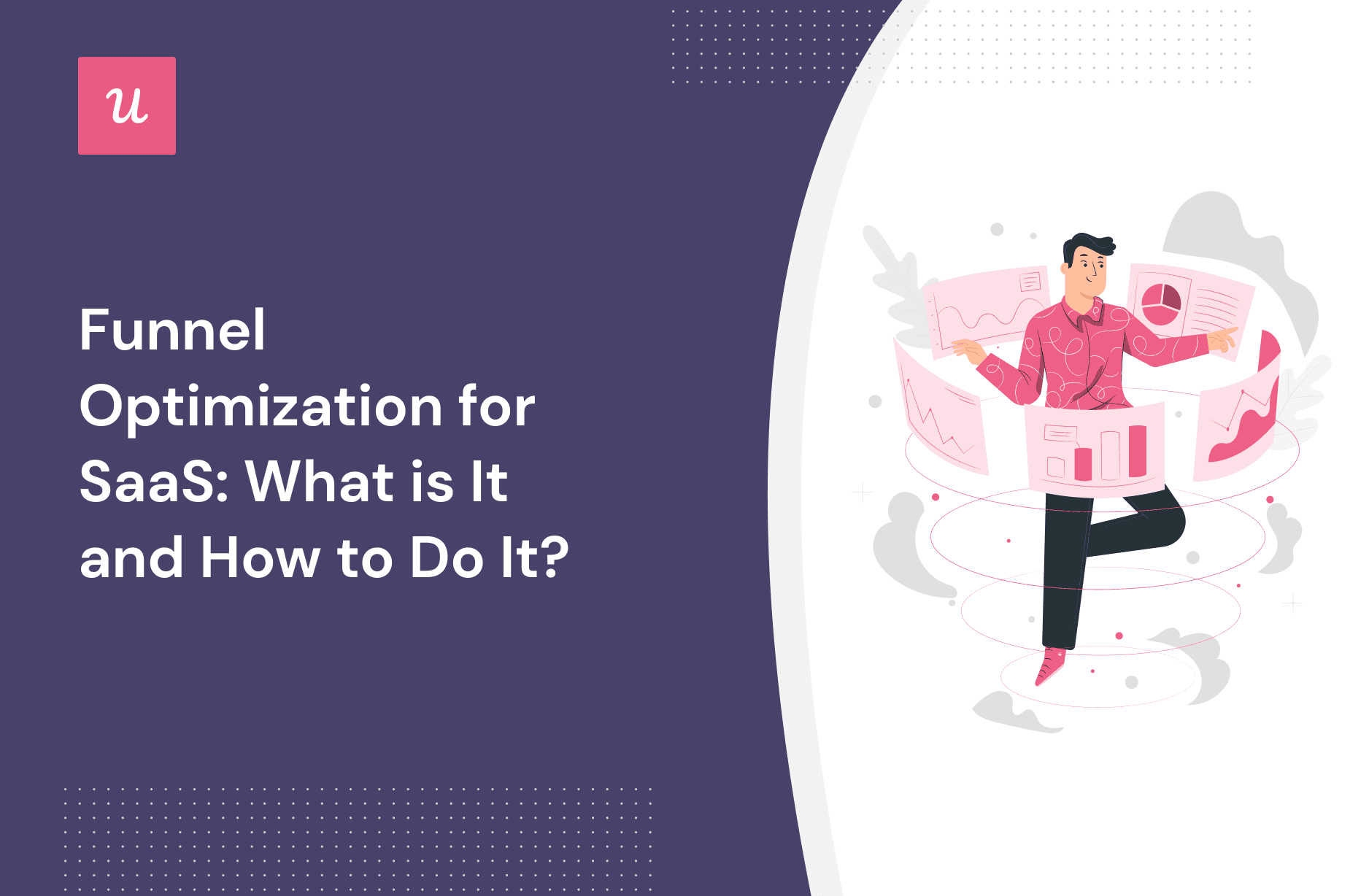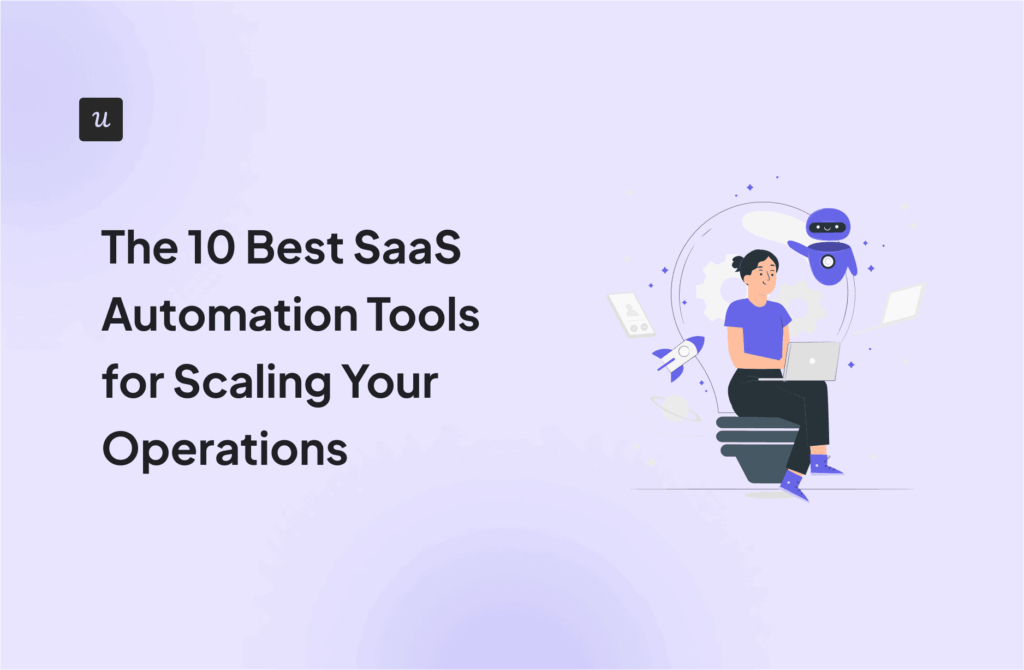
Funnel optimization is important—just imagine getting 1000s of trial users but only converting a couple of paying customers.
There’re many factors affecting conversion rates, but what can you do as a customer success manager or product manager to improve conversion rates across the user funnel and achieve product growth?
In this post, we’ll clarify what a conversion funnel is and provide 9 tactics you can apply to transform doubtful prospects into loyal brand promoters.
Get The Insights!
The fastest way to learn about Product Growth, Management & Trends.
What is a conversion funnel?
A conversion funnel illustrates the customer’s journey from the moment they become aware of your product until they start paying for your product (and become loyal customers).
In SaaS, this whole journey happens inside your app, starting with the free trial and ending with recurrent account expansions. This, according to the Pirate Metrics Framework (invented by Dave McClure from 500 Startups), which is a system for grouping metrics in the user funnel into five stages:
- Acquisition. Prospective customers decide to sign up for a free trial or a demo of your product from a landing page.
- Activation. When users have experienced the “Aha” Moment and activate the core features of your product.
- Retention. Making sure users continue to use and pay for your product after the initial purchase has been made.
- Referral. Your users become advocates, supporting your product through word-of-mouth and customer testimonials.
- Revenue. You start generating more revenue from account expansion through up-selling, cross-selling, and add-ons.

What is conversion funnel optimization?
Let’s say your SaaS company signed 100 new users from its landing pages. Then 60 reached the activation point. And finally, only 18 of the 60 users choose the premium plan.
This means 60% of free trial users achieve the activation stage, while 18% convert into paying customers.
Naturally, conversion funnel optimization is about increasing the percentage of users who come out at the other end of the funnel to maximize revenue. This is achieved by analyzing each stage of the funnel and identifying improvement opportunities—optimizing your company’s ability to convert new users into brand promoters.
9 Funnel optimization tactics to increase conversion rates for SaaS
Now, how do you increase conversion rates without marketing efforts?
Let’s go over nine best practices to remove friction across the product experience and optimize the user funnel.
Start with a frictionless signup flow
To make the acquisition or awareness stage smoother, begin with optimizing your signup page.
Making users verify their email or share their credit card information before interacting with the app adds a lot more friction—which could drive potential users away before they even get started.
To avoid this, implement single sign-on (SSO).
SSO makes the signup process totally effortless. It only requires the email of the user (or their Google/Apple account) so users don’t need to verify their email or include their phone number to get started.
Think of the frictionless signup process on Monday.com:

Personalize in-app experiences from the start
A personalized onboarding experience is required to build rapport early and make them more likely to convert into paying customers.
For this, you can take advantage of welcome surveys to collect data and segment users based on their use case, job to be done (JTBD), job title, and experience.
For example, Kontetino’s welcome survey asks you about your goal (e.g., content approval, scheduling) and the type of company (e.g., agency, or brand) so it can—for instance—introduce their most relevant features for your job.

Trigger interactive in-app guidance to shorten time to value
To make users reach activation and reduce time-to-value, implement interactive walkthroughs.
Unlike generic product tours, interactive walkthroughs respond to in-app behavior in real-time and trigger tooltips meant to onboard users contextually—making it intuitive for users to understand the app quickly.
For example, Kommunicate implemented interactive walkthroughs to hand-hold users as they interact with each feature. It uses tooltips to focus the user’s attention on one step at a time so they can stay busy (in a productive way), save time on product navigation, and thus reach activation faster.

Build an onboarding checklist to help users reach the activation point
It’s your responsibility to present your product’s core features. And if done correctly, users can experience value as quickly as possible and reach the activation stage.
To aid this goal, you can implement an onboarding checklist to guide users through the most basic features right from the start.
For example, instead of leaving the user to their luck, Userpilot uses a checklist that includes the most important steps to reach the activation stage. As well as a progress bar and dummy tasks to make users feel that they’re moving closer to their goals.

Set up conversion events and track the conversion process
Sales funnel optimization is useless if you don’t track your conversion rates across the user journey—or well, macro and micro conversions specifically.
In a nutshell, a micro-conversion is a small step toward achieving a bigger, macro-conversion.
If a micro-conversion is visiting the pricing page, then upgrading to a premium plan is the macro-conversion or “goal”.
So when monitoring your conversions across the funnel, don’t limit yourself to measuring only the users who activated your app, upgraded to premium, or referred your product. You should also track the smaller steps that lead to those goals, such as using the in-app resource center, interacting with a secondary feature, attending an app training, and so on.
Plus: In SaaS, once you’ve defined the micro-steps that are related to your macro-goals, you can track them either by single or group event (like in the Userpilot screenshot below), and it will allow you to track and visualize your funnel clearly.

Use a funnel analysis to identify drop-offs and friction across the customer journey
To retain users, analyzing your user’s in-app behavior and progress is essential to know what to do.
Once you have all the conversion events tracked, you can:
- Monitor the touchpoints across the customer journey map.
- Visualize the conversion funnel with a product analytics dashboard.
This way, you can spot friction points and fix problems that could lead to more churn such as dead clicks, bugs, or web page freezing. Plus it gives the opportunity to reach out to users who are facing specific problems and help them out.

Find customer happy conversion path using path analysis
Once you’ve collected enough data from your customer’s journeys, you can use path analysis to identify the happy path and optimize your conversion funnel to keep users in it.
You see, the happy path is the series of steps a user takes to achieve the desired result without encountering any error or friction. And once you’ve defined it, it’s possible to shape the product experience to keep users “in” the path (using in-app guidance such as tooltips, checklists, and more).

Segment and trigger in-app messages to drive conversion
Optimizing the revenue stage of the funnel doesn’t mean you should push upsells around randomly.
Be smarter instead, segment customers based on product usage or positive NPS (like the screenshot below), and prompt users to upgrade their plan only when you’re sure they will benefit.
For instance, are your users constantly reaching the limits of their plans? Or doing a task the hard way when they could technically automate it with a premium feature?
Then ask them to upgrade—you’ll see an increase in conversion rates.
If users seem to be happy with their current plan, you don’t need to push unnecessary add-ons.

Use surveys to identify improvement opportunities
Spoilers: There’s no such thing as an “optimal” conversion rate, as iterations need to be done constantly.
And the best way to iterate is by collecting feedback to understand how your customers feel about your product and find ways to provide more value (closing the feedback loop).
Thankfully, you can automate customer feedback by auto-triggering in-app surveys such as CES (customer effort score), CSAT, and NPS surveys. This way, you can send surveys after specific touchpoints and collect data almost passively.
And once you’ve gathered enough feedback, you can analyze the answers, get insights, and find ways to improve your conversion rates even further.

How to optimize your conversion funnels using Userpilot?
For all the tactics we’ve seen, you can’t just code your way to success even if you’re skilled (too much time and money).
That’s why we recommend Userpilot—despite our obvious bias—since it’s probably the most cost-efficient product management tool to apply all these tactics (and it’s already coded).
Here’s how:
Retain potential customers by personalizing in-app experiences
Userpilot can automatically segment your users based on a wide range of attributes such as ID, roles, content engagement, feature usage, NPS response, and more.
This way, you can trigger personalized in-app messages such as tooltips, slideouts, and modals based on:
- Jobs-to-be-done
- In-app behavior and engagement
- User journey stage
- Specific events and the count of them using custom attributes

With Userpilot’s native mobile SDK, you can create targeted onboarding flows using slideouts, carousels, and push notifications without writing extra code.
Optimize sales funnel with advanced product analytics
Finally, Userpilot gives you access to advanced product analytics to monitor in-app behavior and product usage—allowing you to optimize your sales funnel.
It includes plenty of functionalities, such as the ability to tag features, track events, and visualize how users progress across different touchpoints throughout the customer journey:

Capture user feedback for conversion path improvement
Additionally, Userpilot lets you collect quantitative and qualitative feedback with contextual in-app surveys such as NPS, CSAT, and CES.
And yes, it allows you to trigger relevant surveys based on user segment, ID, event tracking, and more—making them more likely to receive high-quality feedback.

Conclusion
In SaaS, retaining customers with funnel optimization is as impactful (if not more impactful) than acquiring them.
With this guide, you can hopefully implement the funnel optimization tactics we explained and retain more users.
So now that you know the tactics for optimizing your marketing funnel, why not get a Userpilot demo to improve your conversion rates without coding?







